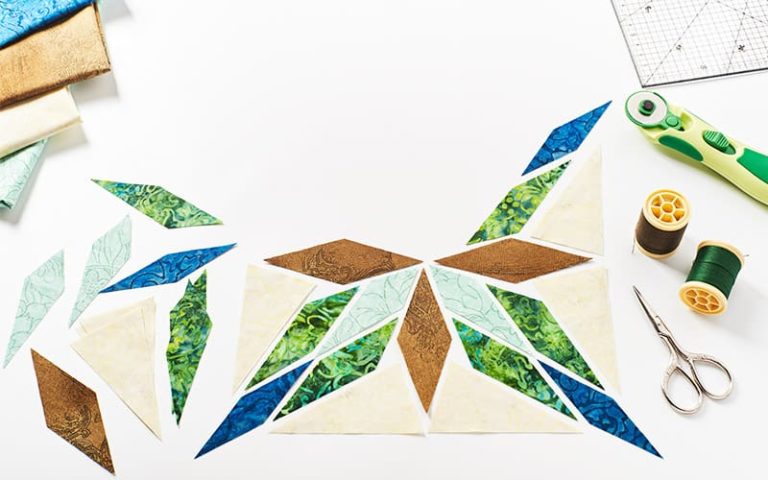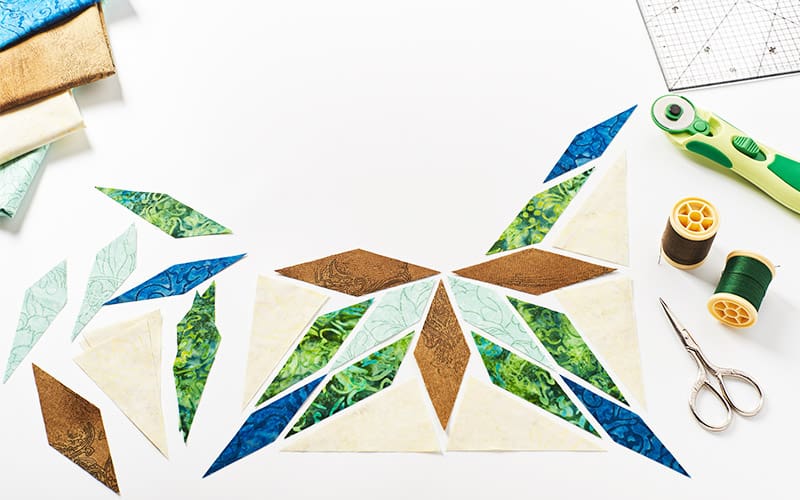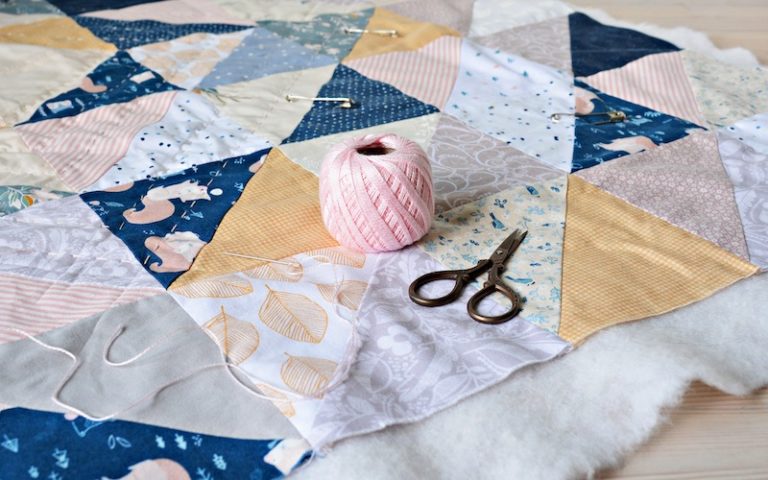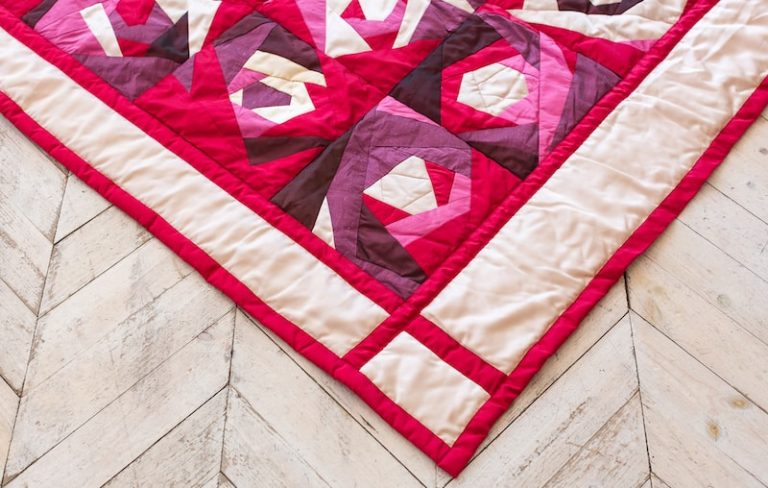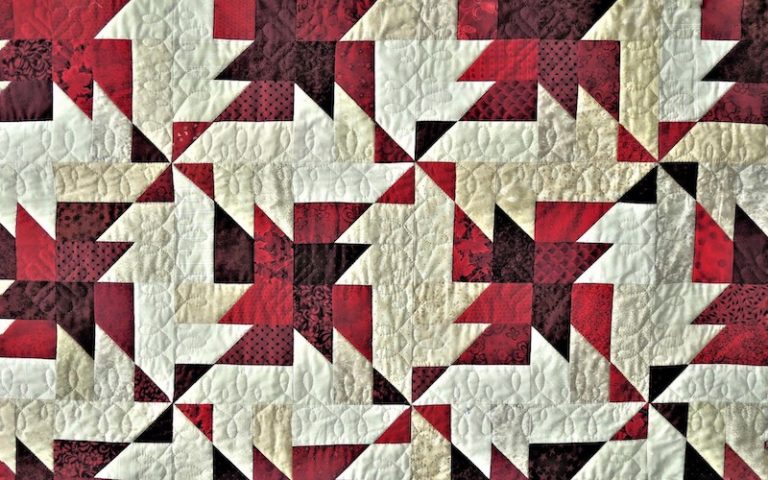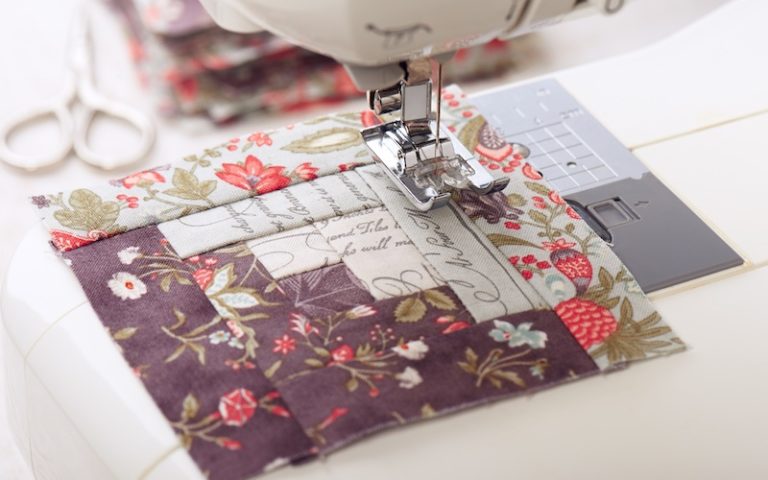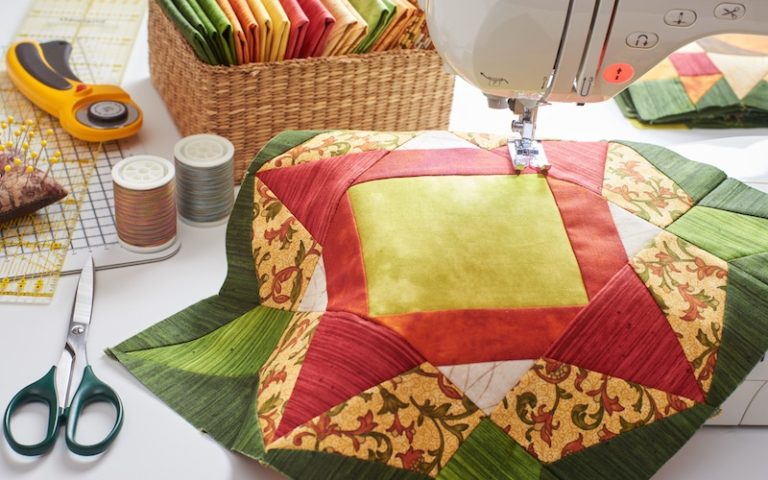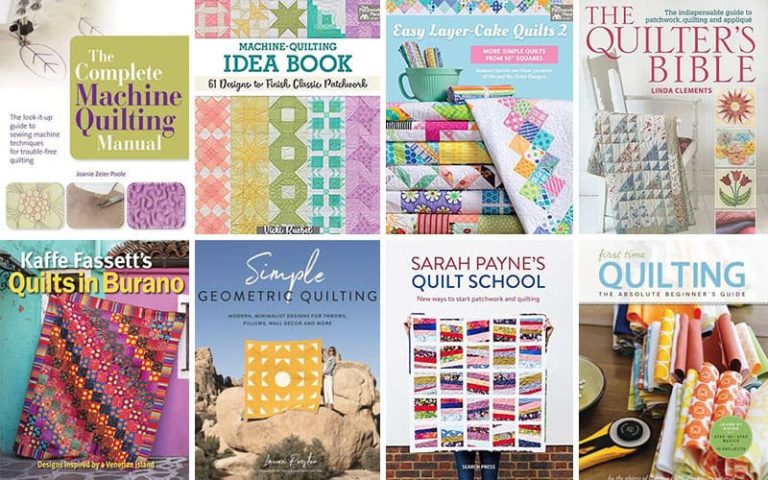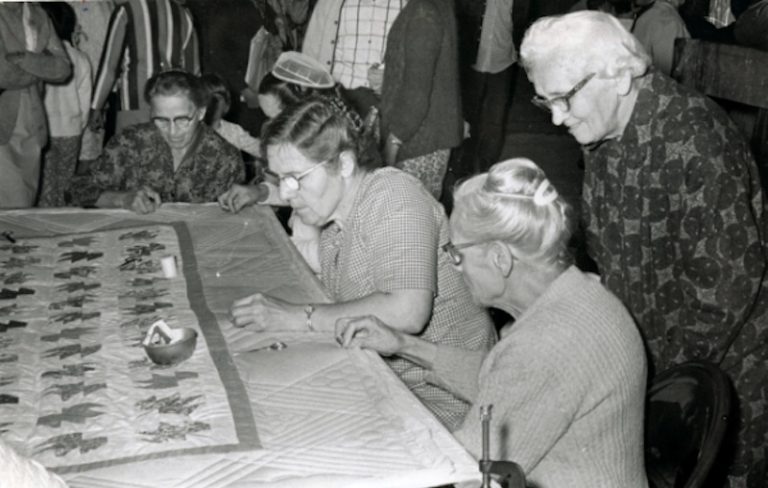Quilting is arguably one of the most historically-important handcrafts. Closely associated with tradition, it remains extremely popular today.
Though these beautiful, intricate designs may seem very complex, most quilting techniques are relatively easy to master, with a little research. On that note, here are the key things you should know about quilting techniques and styles.
Basic knowledge and techniques
When getting started with quilting, it is important to first learn the basics. From there you can work your way up to more complex techniques.
1. Learn all the common quilting terminology
Quilting is a very distinctive type of sewing involving specific techniques. As such, it has its own set of terminology which can be quite confusing even to experienced sewers.
Important terms to learn include patchwork quilt blocks, applique blocks, batting, sashing, and binding. When starting out with quilting it is important to master the common quilting terminology. Otherwise, it can be quite confusing when trying to learn how to quilt, follow patterns and so on.
2. Learn about all the common fabrics
Quilting fabrics are usually made from 100% cotton, as this is considered the best for quilting. Material can come in a variety of colors, prints and patterns. Reproduction fabrics, which recreate designs from past eras such as the civil war, are very popular.
Whichever fabric you use, it is a good idea to wash it before you start quilting, in case it shrinks or colors bleed while sewing. You can also buy fabric that is pre-cut into charm squares or thin strips. Some quilters prefer this as it takes one step out of the process.
3. Always double check your measurements before you cut
Given the intricate nature of quilting, accurate measurements are essential. Make sure you check and double check you have the right measurements before you cut!
It can be a good idea to invest in an acrylic quilter’s ruler, which not only assist with accuracy, but are sturdy enough to be used with rotary cutters. The best sizes for cutting strips or rectangles are a 6 and a half by 24 and a half inch ruler, or a 3 inch by 18 inch ruler.
To square up fabric pieces and the entire quilt, you’ll need a 12 and a half inch square quilter’s ruler.
4. Keep an iron next to your work area for pressing as you go
Piecing together your quilt blocks can be a challenge, as absolute accuracy is required. Pressing your quilt blocks as you go is the best way to make them more accurate, which will give a much better end result.
Keep an iron in easy reach to press as you go. Additionally, you can use your iron to press seam allowances and set seams, which helps to keep your patchwork neat.
5. Use rotary cutting to be more efficient
Rotary cutting makes it much quicker and easier to cut the many fabric pieces you need when quilting. Using a special tool with a very sharp cutting wheel, you can cut in a swift gliding motion.
The best rotary cutter for quilting is 45mm to 60mm diameter. You’ll also need a special cutting mat, the bigger the better.
6. Use strip piecing to quilt faster
Strip piecing is a great technique that makes quilting complex designs much quicker. It is also fairly simple to master.
Strip piecing involves taking large wads of fabric, sewing them together and then cutting off sections. You’ll then have already sewn sections which you can easily to sew together to create beautiful, intricate designs at the snap of your fingers.
7. Use borders to define your quilt design
In quilting, borders are very important. Borders help to contain the design, drawing the various elements together and making it more aesthetically appealing.
Borders can be plain or made up of shapes like the rest of your quilt. Both can look equally stunning, it is really up to the style of the quilt and your personal taste.
8. Know the different types of quilts
From traditional to modern, there is a wide variety when it comes to types of quilts. One of the most popular types is Amish quilts, which typically are made with traditional Amish colors or patterns, often with a natural theme.
Hawaiian quilts, on the other hand, have symmetrical patterns built from the inside out. Other traditional quilt types include log cabin, flying geese, star, and nine patch blocks.
Looking for some inspiration? Check out our post where we’ve collected some of our favorite modern quilt patterns.
Learn about the common quilting techniques
When learning to create a quilt, it’s a great idea to familiarize yourself with all the common quilting techniques. Here are the essential techniques you should know about.
1. Applique
Applique is a technique which creates decoration that sits on top with the quilt. These decorative elements come in a variety of textures, from flat to three-dimensional.
The various textures reflect the different applique techniques used to create them, which include freezer paper applique, fusible applique, and reverse applique.
2. Block and Patchwork
One of the classic styles of quilting, this technique uses squares, strips or triangles of fabric in different colors or patterns to create a pattern.
The quilt blocks are sewn together using running stitch or other stitches in a decorative pattern. In sewing the pieces together, the quilter creates their own, new material. Block patterns can be anything from simple to extremely intricate.
This technique is used to only to create quilts but also pillows, wall-hangings, and other décor items.
3. Paper Pieced
Sometimes known as Foundational Paper Piecing, this technique makes quilting easier by sewing the fabric pieces directly onto specialty paper. This is not only great for beginners, it also means anyone can create more complex projects, as well as aiding with the design process.
Paper quilting patterns are essentially templates with the design printed on to them. All you need to do is sew the fabric pieces on according to the pattern.
Alternatively, if you want complete creative control you can use plain piecing paper, cutting out your own shapes and creating whatever designs you want.
4. English Paper
English Paper Piecing is a specific paper piecing technique that dates back to the 18th century. This traditional quilting style using paper templates that are the exact shape and size needed.
In this technique, the fabric is then wrapped around the paper, then basted and pressed, holding the fabric in shape. Finally, the pieces are whip-stitched together to create the quilt.
5. Trapunto quilting
Trapunto, meaning “to embroider” in Italian is a stuffed quilting technique that uses padding, or batting, to create a dimensional effect. In this technique, batting is placed between the quilt top and the backing fabric, and then all layers are sewn together. This technique of sewing all three layers together at the same time is also known as a “quilt sandwich”.
Quilting Styles
There are various styles you can use to make a quilt. These range from hand-sewing to various techniques on the sewing machine.
1. Hand quilting
This classic style of quilting is more methodical and takes longer compared to other styles. Hand quilting involves using a needle and thread, with a variety of stitches used.
A hoop is traditionally used to keep the fabric taut. Some quilters prefer to work without the hoop for more freedom, although this also depends on the design.
This style creates a distinctive hand-stitched look that many consider superior, though requires extra attention to achieve even and neat stitching, making it time-consuming.
2. Machine quilting
These days many quilters prefer to use a machine for their projects. The advantages of machine quilting include more even, polished stitching, as well as being much faster and easier.
You can sew your quilt on a regular sewing machine, or there are specific quilting machines. These machines have special features and accessories to make quilting easier.
3. Free-motion quilting
Free-motion quilting is a particular style of quilting that uses the sewing machine to move the fabric freely through the machine. Generally, a straight stitch is used to create stitching effects through stipple and circular stitching techniques with the free motion of the fabric. In order to do free motion quilting you will need a specific free-motion or darning foot.
This style of quilting can be a challenge, but once mastered it can be used to create unique effects including words in cursive “handwriting”. Many quilters love the creativity and freedom allowed by free-motion sewing to make their own design without following a pattern.
4. Longarm quilting
Another style of quilting that can be done on a machine is longarm quilting. Unlike free-motion quilting, longarm quilting requires a specific type of sewing machine.
These machines have an extended quilting head with a range between 10 and 14 feet that can be guided by the machine or by hand, fabric rollers and a frame. The fabric stays in place while the machine quilts by rolling vertically and horizontally across the material.
Quilters love these machines because they can quickly sew the quilt top, batting, and backing together at the same time.
On the down-side, longarm machines are large, bulky and expensive. However, you may be able to find a local craft store that will allow you to rent time on their machine.
Conclusion
Taking these tips into account will allow you to develop and improve your quilting technique.
Whether creating traditional projects just like those made by your great-grandmother, or coming up with something dynamic and modern, these techniques and styles will let you create something truly beautiful.

